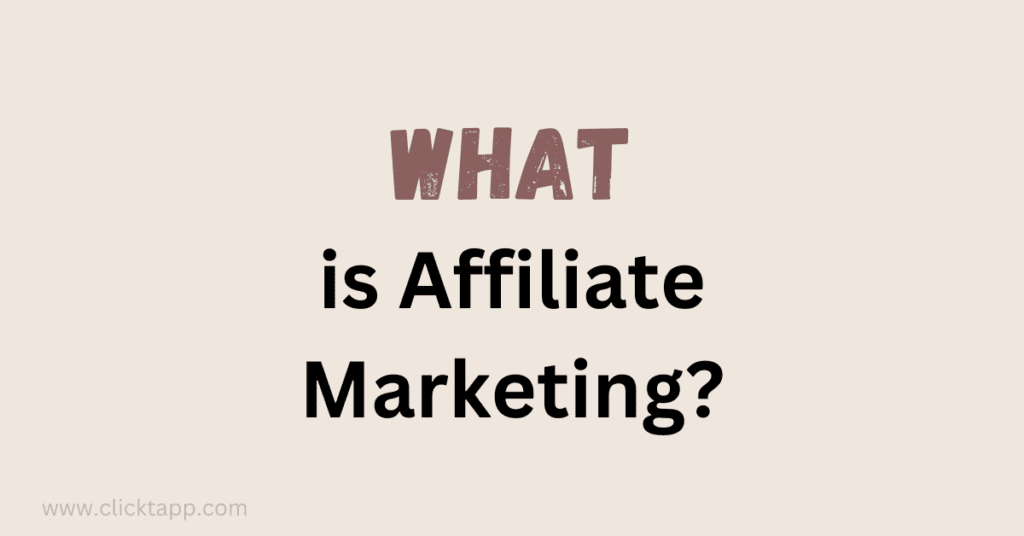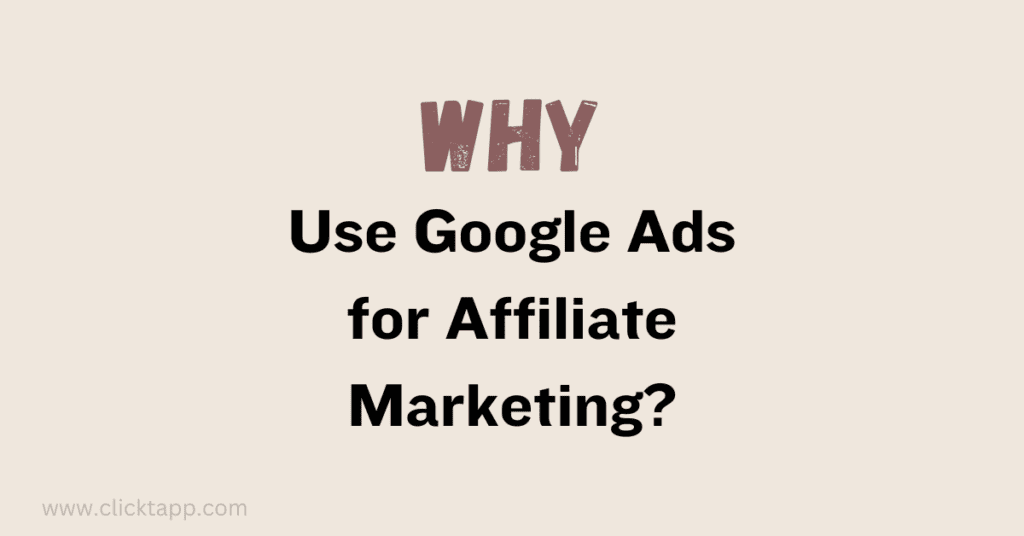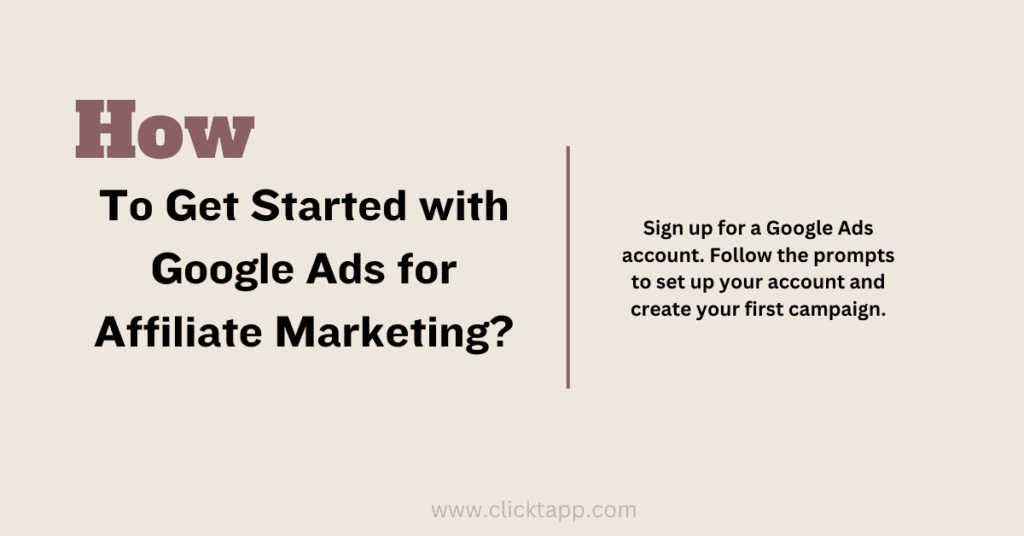How to do Affiliate Marketing
Regularly check your ads and adjust them as needed. Try different images, keywords, and calls to action. Also, refine your audience and bidding strategy to boost returns. This will improve your results. Affiliate marketing is a popular way to earn from websites or blogs. Affiliates promote other companies’ products or services. They include referral links in their content. For every sale or action from these links, they earn a commission. There are many ways to promote affiliate offers. Using Google Ads is very effective. It allows affiliates to reach a large audience and drive traffic to their links. In this guide, we’ll explore Google Ads for affiliate marketing. We’ll answer common questions and discuss the benefits.
What is Affiliate Marketing?
Affiliate marketing lets partners, called affiliates, earn by promoting others’ products. It’s a simple idea. Affiliates get paid when someone uses their link. If a customer buys something, the affiliate earns a commission. They also get rewards for sign-ups and for filling out forms. This method helps both sides. Companies gain more visibility. Affiliates make money from their marketing efforts.

Why Use Google Ads for Affiliate Marketing?
From Google AdWords to Google Ads, this advertising titan reigns supreme. Nothing can match its reach and versatility. It offers three ad formats: search, display, and video. Affiliate marketers rejoice—your ideal audience awaits. Precision targeting meets diverse presentations, creating a potent mix for promotion. With Google Ads, your message hits its target. It turns clicks into profits. Harness this digital dynamo and watch your affiliate endeavors soar to new heights.
- Highly Targeted Traffic: With Google Ads, you can target specific keywords and demographics. You can also target interests and locations to reach your ideal audience.
- Scalability: Google Ads allows you to scale your campaigns based on your budget and goals. Start small. Then, increase your investment as you see results.
- Fast Results: SEO can take time to show results. Unlike that, Google Ads can quickly drive traffic to your affiliate offers.
- Measurable Results: Google Ads offers analytics and conversion tracking. They let you measure and improve your campaigns for better results.

How to Get Started with Google Ads for Affiliate Marketing:
- Choose Your Affiliate Offers: First, pick the right affiliate offers before you advertise. Promote products your audience will like. They should be proven. Then, match your promotions to your niche for the best results.
- Create Your Google Ads Account: Create a Google Ads account. Set it up to launch your first campaign. Then, use the steps to create a custom marketing strategy. It will help you reach the top of search results.
- Set Your Budget and Bidding Strategy: First, set your budget. Then, align your bidding with key goals. Maximize clicks, boost conversions, or optimize ad spend. Choose wisely to meet your goals and stay within budget.
- Create Compelling Ad Copy: Create ads that show your product’s value. Use key terms and a strong call to action. Write crisp, benefit-focused copy. It should hook readers, spark interest, and drive clicks. It must grab attention and spur action.
- Select Target Keywords: Use keywords that match your affiliate offer to reach the right audience. These are the search terms customers would use to find your products. Use Google’s Keyword Planner tool. It helps you research keywords, estimate searches, and analyze competition. Use it to find the best keywords. It will reach the right people, boosting sales.
- Set Up Conversion Tracking: Add conversion tracking to your website. It will let you see what users do after clicking your ads. For example, did they buy something or sign up? It helps you measure campaign success and improve results.
- Monitor and Optimize Your Campaigns: Check how ads are doing and make changes if needed. Try new images, words, and calls to action. Also, adjust the target audience and bidding for the best ROI.

FAQs about Affiliate Marketing with Google Ads:
1. Can I promote any affiliate offer with Google Ads?
Google Ads allows affiliate marketing but with strict rules. You must follow them to keep your ads and account. For instance, you cannot promote illegal items, like online gambling or fake goods. Google’s rules protect users from harmful, misleading content. Affiliate networks, like Amazon Associates and Commission Junction, have their own rules. They may limit some ads by region. For example, Amazon banned weapon ads in some countries. Breaking these rules can lead to losing your account or ads.
2. How much does it cost to advertise on Google Ads?
Google Ads cost depends on your bid strategy, competition, and ad quality. In competitive markets, you need to bid higher for better ad spots. Ads with relevant keywords and strong copy can be cheaper and more visible. You can set a daily budget to avoid overspending. Google won’t exceed this limit. So, there are no surprise bills. You pay only when someone interacts with your ad. This could be a click or an action, like a buy. This model ensures you only pay for valuable results.
3. How can I improve the performance of my Google Ads campaigns?
To enhance your campaigns, focus on three areas: ad copy, targeting, and landing pages. First, test different ads to find the best ones. A fashion brand could try different models. A tech startup might test headlines. Next, refine your targeting to reach the most likely buyers. This could mean segmenting by age, interests, or behavior. Also, check the data often for hidden strengths and weaknesses. Use the insights to make decisions and tweak your strategy. This will improve your ROI and audience engagement.
4. Are there any best practices for affiliate marketing with Google Ads?
For affiliate marketing with Google Ads, first, pick the right offers. Then, target specific keywords and audiences. Next, make landing pages that add value. For example, include testimonials or before-and-after photos for a fitness program. You might also offer a free consultation. Understanding Google’s rules is key. Avoid misleading ads. Your ads must be relevant and engaging. This will boost conversions, build trust, and avoid penalties or bans.
Conclusion
Google Ads is a key tool for affiliate marketers. It brings targeted traffic, which boosts commissions. This guide shows the best ways to promote. You can target people by their demographics, interests, and behaviors. This ensures your message goes to the right audience. You can track campaigns in real time with Google Ads. This makes it easy to spot improvements. You can boost profits by adjusting ads using data. Regular checks and updates will improve your marketing.


Pingback: Google Ad Management Services: Boost Your Business - Clicktapp
Pingback: Digital Marketing and Affiliate Programs: A Beginner Guide - Clicktapp